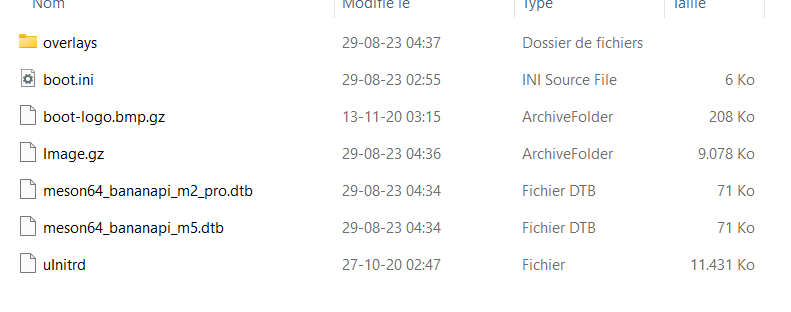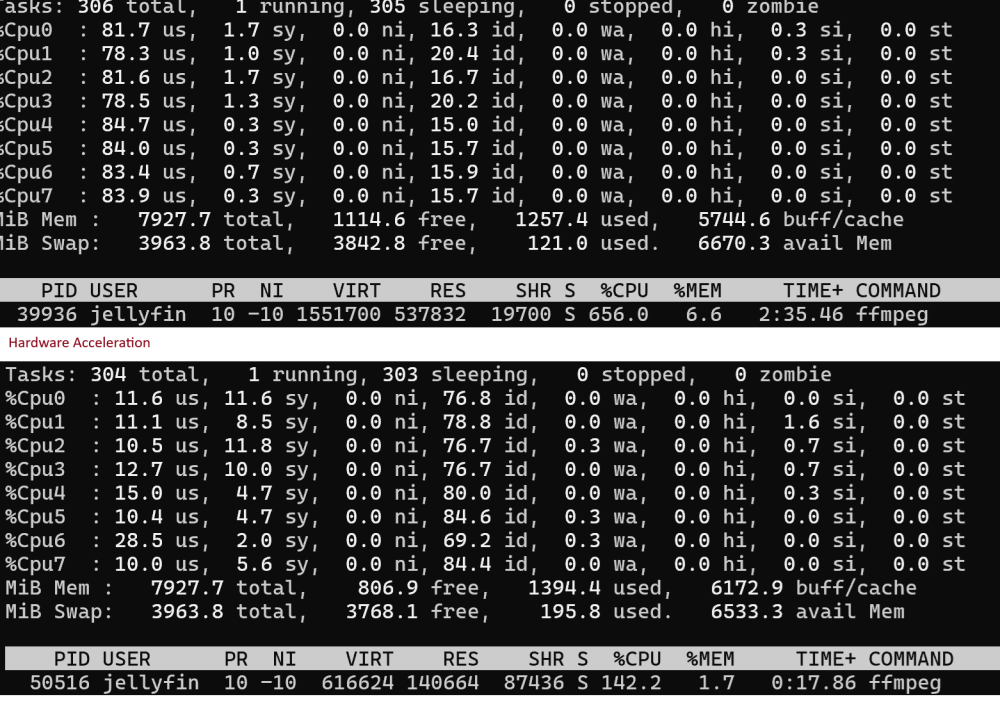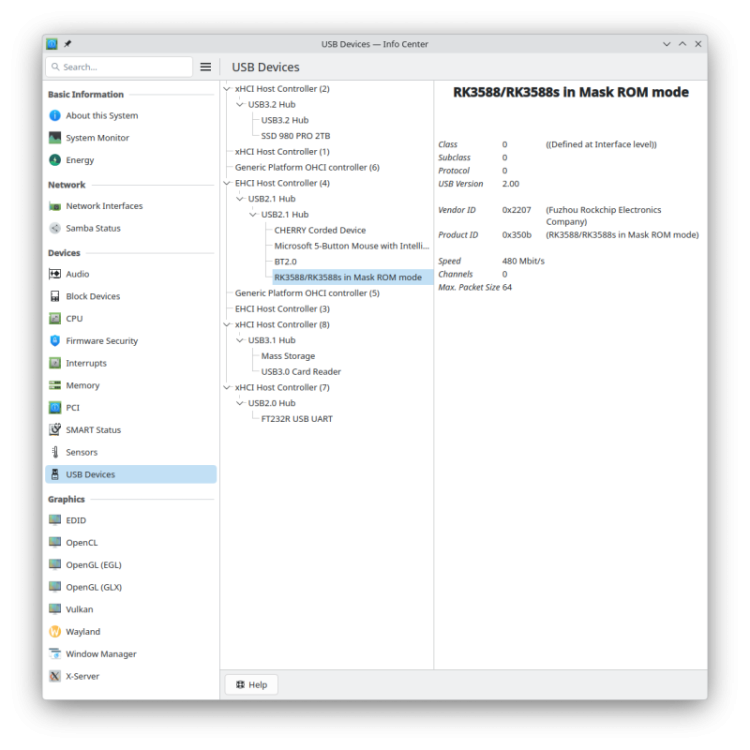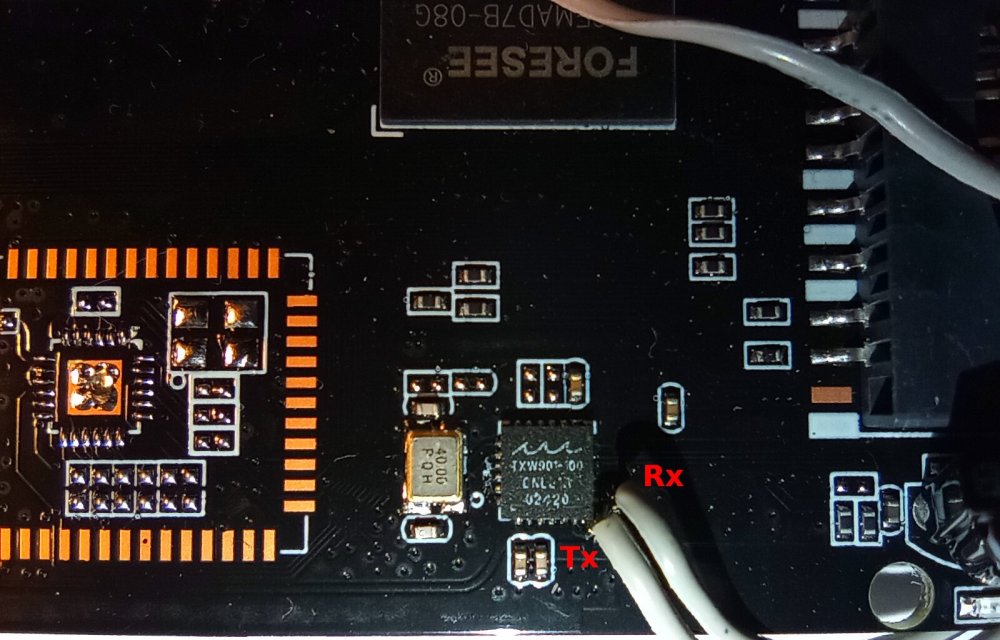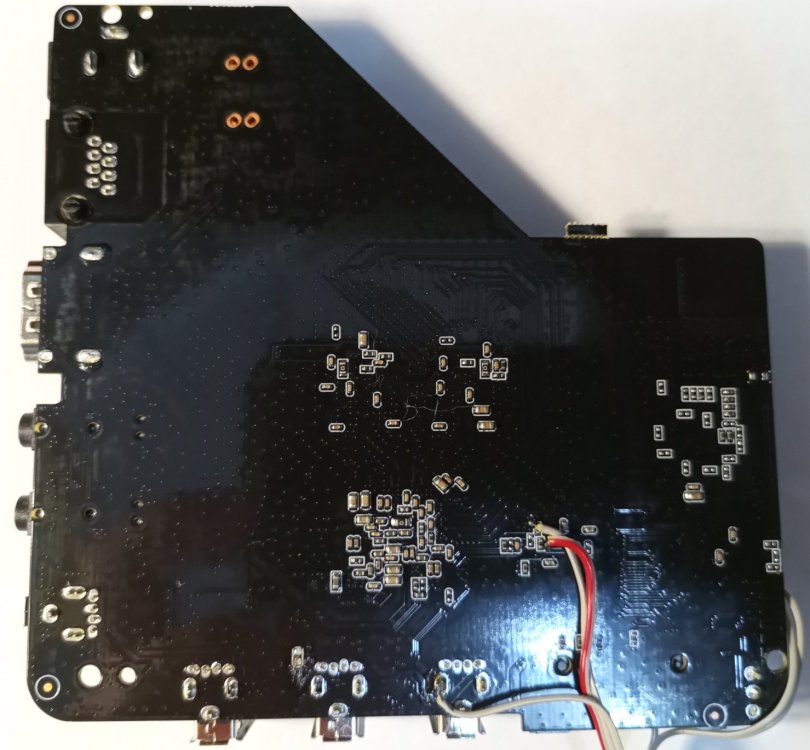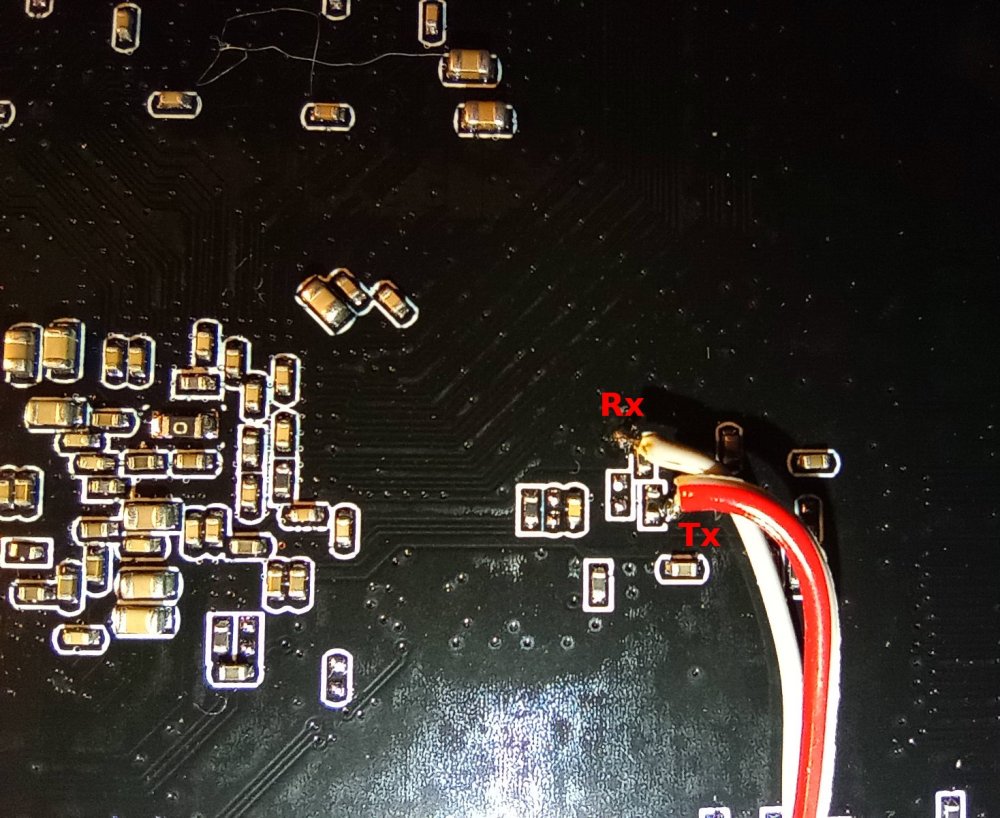Active threads
Showing topics posted in for the last 365 days.
- Past hour
-
More informations : after i wrote an armbian image on SD card with USBImager on my windows desktop (with verified checked) , The SD card is not readable , it appears as not formatted in windows. But if i write the image from BPI site, i can read the partition on the SD card and see the files on it. Maybe it helps
- Today
-
@Aroldo Bossoni The optimal would be understanding the reason why the watchdog triggers, but could be a difficult task without a hint because of the closed source proprietary trust os. The easiest thing is to provide armbian images with the opensource trust os rather than the proprietary, which is totally feasible because it just requires to swap a file in the armbian build scripts. That would blow the issue away, but unfortunately the proprietary trust os provided DDR scaling and virtual poweroff. The latter is a seldom used feature, but the DDR scaling provided a dramatic improvement in performance and it is hard to give up on that. Swapping the things at runtime is not savvy: when u-boot updates, the proprietary trust os will be reinstalled overwriting whatever you put in there. I would be happy with opensource Trust OS and no runtime DDR scaling, but stil having it at a fixed decent rate (660MHz, instead of the default 330MHz), but some boards do not boot at all when they are instructed to boot at 660MHz.
-
i`ll already fried that lcd. So this is the end Because short circuit is been in lcd, orange is a live for now. try to move on hdmi lcd+touch. Thanks for U`r help robertoj.
-
I confirm this issue. For the purposes of this experiment, I replaced the power supply with a similar one equipped with an LED. The power supply is connected to an electrostatic precipitator equipped with a power button. We turn on the electrostatic precipitator using the button. The power supply LED lights up. The Odroid M1 turns on and boots normally. We shut down the Odroid M1. We turn off the electrostatic precipitator using the button. After 2 seconds, we turn it back on. The Odroid M1 does NOT turn on again. Therefore, replacing the power supply did NOT solve the problem. Experimentally, we have determined that the Odroid M1 does NOT turn on again as long as the power supply LED remains lit, even when the electrostatic precipitator is turned off. Therefore, the issue lies with the residual charge in the power supply capacitors. If, with the electrostatic precipitator turned off, we wait until the power supply capacitors are depleted and the power supply LED goes out, then when we turn on the electrostatic precipitator again, the Odroid M1 turns on normally and boots normally. Meanwhile, the Raspberry Pi doesn't have this power supply issue. Therefore, this is a design flaw in the Odroid M1.
-

RK3588 - Setting Up Mali & Hardware Acceleration
Gian Luca replied to David N's topic in Orange Pi 5 Plus
I installed the .deb package you suggested, however I don't think everything went as it should have: the device /dev/mali0 is still missing. I understood that this device must be present in order to be sure the device is used correctly. Is it right ? The kernel of Armbian Ubuntu Noble also has been updates: the version is 6.1.115-vendor-rk35xx now. The output of lsmod command is: Module Size Used by rk805_pwrkey 16384 0 nvmem_rockchip_otp 20480 0 r8169 77824 0 rockchip_cpuinfo 16384 1 nvmem_rockchip_otp adc_keys 16384 0 -
Thank you @Werner it just worked perfectly once disabled. That'll teach me to enable things. Beyond lower CPU usage compared to a USB to SATA adapter, I have some performance benchmarks. // write dd if=/dev/zero of=testfile bs=1M count=3000 oflag=direct 3145728000 bytes (3.1 GB, 2.9 GiB) copied, 11.382 s, 276 MB/s (usb) 3145728000 bytes (3.1 GB, 2.9 GiB) copied, 9.74696 s, 323 MB/s (sata) // read dd if=testfile of=/dev/null bs=1M iflag=direct 3145728000 bytes (3.1 GB, 2.9 GiB) copied, 10.8119 s, 291 MB/s (usb) 3145728000 bytes (3.1 GB, 2.9 GiB) copied, 9.09585 s, 346 MB/s (sata) And some Jellyfin CPU vs Hardware accelerated transcoding usage:
-
It all depends on the GUI apps you want to run. Web browser: at least 4GB Your own Python GUI app: 1GB 16GB storage is fine. "A more advanced build framework" only refers to the laptop you use to compile your own Armbian OS... it doesn't refer to the SBC where you will run it.
-
Attached the source overlay file for the tm16xx driver. All features working. See for details and thanks to https://github.com/jefflessard . rx3318-H50.dtso.txt
- Yesterday
-
The mainline kernel has currently a shortcoming in USB-TYPEC support. FUKAUMI Naoki demonstrated a workaround for other devices that also works for the ODROID-M2.
-

Armbian Linux v6.1 - Bluetooth not working - no BT controller found
SM2027 replied to SM2027's topic in Banana Pi M7
https://paste.armbian.com/nesusobaso Thanks, don't know if diags file is complete: -
Quick note on what I also had to change to make it running on my Raspi: in fstab, the option "commit=600" won't work as the Armbian version for Raspis uses a FAT32 boot partition. Apparently "commit" doesn't work with that file system. To get it working, my fstab reads: … UUID=[ID] /boot vfat defaults,noatime,nodiratime 0 2 …
-
Hi! I am around... Thank you for all the work you have been doing on the M1S. Unfortunately I haven't had the opportunity to test recently, but I expect to. As for the low performance, I really had the feeling that the M1S is slow on graphics, but decent (for its class) on regular CPU work. I had tested with linuxfactory's bookwork image and that was the feeling I got from then. I don't think the long wait time for armbian-config to open is normal. My first bet would be something related to network access, either there is not a working internet access or some configuration is wrong. My second bet, some sort of reading error on the microSD card. The M1S isn't that sloooow. I would suggest you check dmesg for a clue after running armbian-config. Best regards, Sérgio
-

KickPi K2B not booting up: DRAM setup not supported
chuanzz replied to chuanzz's topic in KickPi K2B
The official sent me the Armbian SDK, which includes kickpi-k2b-v2 and v1. I tested it and it can boot normally. Wired/wireless networks and Bluetooth all work fine, but the OTG function just won’t work no matter what I try. (g_ether and g_serial not woring) Anyway, I hope it can be merged into Armbian. I only compressed the config and patch folders, which should be sufficient. https://we.tl/t-wtmI81zB5e -

mxq pro 4k 5g allwinner h313 can't sd card boot
Sergey Lepeshkin replied to Ducdanh Nguyen's topic in Allwinner CPU Boxes
Yes, there are some updates. First of all I've found two uart interfaces. See attached photos. Two test points located on the bottom side of pcb is for SoC uart, and two near wifi interface is for TXW901 uart. Tx and Rx as on attached pics. Furthermore, AFAIR, powering on while holding SoC Rx low forces SoC to search for bootable usb flash drive. Second is my modified android (not armbian!) firmware v.0.2. You can download it using link in my message above. Changelog also there. Major changes: Google Play is working again, improved wifi stability. Third, there are Linux drivers available for TXW901 (Wifi interface). You can get it here: https://www.taixin-semi.com/Product?prouctSubClass=66 (registration is required, however, all that you need to register is valid e-mail). So, potentially, one could compile armbian image for this box (integrate wifi driver into armbian, obtain memory settings through SoC uart, configure and compile kernel and boot image). -
I built an unofficial Armbian 6.12.51 (Noble) image using the build tool: Armbian-unofficial_25.11.0-trunk_Nanopiduo_noble_current_6.12.51.img I am trying to get the micro-USB port to work as a USB serial gadget (g_serial / libcomposite). What I have done / observed: g_serial and libcomposite modules are loaded: lsmod | grep g_serial g_serial 12288 0 libcomposite 49152 2 g_serial,usb_f_acm ConfigFS is mounted: mount | grep configfs configfs on /sys/kernel/config type configfs (rw,nosuid,nodev,noexec,relatime) UDC exists: ls /sys/class/udc/ musb-hdrc.2.auto Gadget folder does not exist: ls /sys/kernel/config/usb_gadget/ # output: empty Trying to manually bind a gadget fails: echo musb-hdrc.2.auto | sudo tee /sys/kernel/config/usb_gadget/g1/UDC # Output: tee: UDC: Device or resource busy Current UDC mode: cat /sys/class/udc/musb-hdrc.2.auto/device/mode b_idle There is no /sys/class/usb_role/usb0/role available to force device mode. This setup works fine on Jammy kernel, same cable, same SD card rootfs. Problem: The OTG controller comes up in b_idle mode, preventing the USB gadget from binding. /dev/ttyACM0 never appears on the host PC. It seems like the device tree / overlay for Noble 6.12.51 is not configuring the OTG port for peripheral mode. What I want: USB serial gadget (g_serial) working over the micro-USB port on Noble 6.12.51 build. Any advice on the correct overlay or device tree modification needed to bring the OTG port into device mode at boot. Extra info: CONFIG_USB_CONFIGFS_SERIAL=y in kernel CONFIG_USB_LIBCOMPOSITE compiled as module Micro-USB cable confirmed working with Jammy kernel Modules: libcomposite, g_serial, usb_f_acm present Thanks in advance for guidance!
- Last week
-
I probably better wait on it, that looks above my skill set unfortunately, I consider myself just a novice user. I can handle burning and image and booting it, if it's fairly straightforward, but I probably shouldn't dig myself any deeper for now LOL I'll be on standby in case anything ever changes or becomes easier in the process!
-
Hello community Here are the versions I’m using: Kernel: 5.15.48-sunxi OS: Linux nanopineo 5.15.48-sunxi #22.05.3 SMP Wed Feb 19 15:56:03 UTC 2025 armv7l GNU/Linux I’m having a problem. Sometimes, during boot, I see the following log: After this message, the system halts. The only way to fix it is to flash the image again or to boot from an SD card and mount the EMMC which fixes the file system. I noticed that the device doesn’t use the overlay_prefix variable from /boot/armbianEnv.txt. It shows this message: I tried adding the overlay_prefix variable manually in the boot.cmd file, but it didn’t help. Previously, I changed: to Could that be the cause? I changed it back to default but the problem still happens. Do you have any ideas what could be wrong?
-

Run dkms after armbian-upgrade
Marcos Alano replied to Marcos Alano's topic in Software, Applications, Userspace
I think it's easier than that. I looked into the postinst file for kernel headers on my Ubuntu machine, and I found this: #!/bin/sh set -e version=6.17.0-7-generic if [ "$1" != configure ]; then exit 0 fi if [ -d /etc/kernel/header_postinst.d ]; then DEB_MAINT_PARAMS="$*" run-parts --report --exit-on-error --arg=$version \ /etc/kernel/header_postinst.d fi exit 0 The postinst script for the headers package doesn't have anything similar, so we should add it this part related to execute the scripts under `/etc/kernel/header_postinst.d`. Can you do that or should we add someone else to the discussion? EDIT: Debian does something similar. Same goal, just a different code: #!/bin/sh -e version=6.12.48+deb13-amd64 linux-run-hooks headers postinst $version -- "$@" exit 0 -
@Jeeva Kandasamy it’s on this page https://github.com/NickAlilovic/build/tree/v20250306
-
Latest compile for odroid xu4 does have a desktop. Any reason why?
-
Same answer and further reasoning as here:

